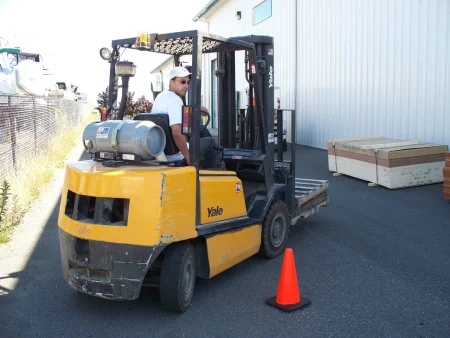
Front Loaders
Front loaders are big job equipment typically used to lift, scrape, and push materials in construction and other related tasks. There are various types and sizes, but typically they weigh around three tons. With its great weight and hundreds of horse power, its pound capacity is immense: up to hundreds of thousands of pounds. However, because of sheer size and physical capacity, the potential for severe accidents and losing balance is something to watch out for.
Such a large vehicle with intense power pushing far away from the body of the vehicle sets up a natural imbalance that if not handled or corrected can create all sorts of nasty scenarios. Even with proper stabilization however, the front loader can easily become unbalanced in its surroundings, especially if OSHA Requirements are not followed.
Prevention
For example, a loader was simply backing up on a ridge it just created and rolled onto its back. Luckily the rolling cage held, but it is much easier to prevent rolling than to deal with the effects of it, which requires understanding balance.
Front Loader Attachments
Also remember some front loader buckets are simply attachments onto tractors and other vehicles. These can make the vehicle top heavy which will in turn require weights to balance. Plus, some front-end loaders exchange buckets for forks, which can again change the balance.
5 Front Loader Balance Hacks
Due to moving and lifting all the time, the balance of the front loader shifts just as rapidly. This is why creating balance is so essential for safe loader use.
- Seemingly obvious, but also often ignored is balancing your load. Putting more weight to one side creates an undesirable tipsy effect and strains the mechanical arm.
- Use the right size of a loader for the job. Too big or too small can make it awkward to handle like the spindly arms of a T-rex overreaching and will strain the vehicle unnecessarily.
- Selecting the correct bucket size is just as important as choosing the size of the loader itself. If they do not match in ability, then one or both will wear down quickly from creating a weight imbalance.
- Keep to stable, flat terrain. Loaders are known for creating embankments at construction sites and in livestock feed pits, but that doesn’t mean they don’t tip.
- Use counter weights appropriately. Generally, the counter weights are placed in the rear area and weigh about the same as the expected load.
For more information and training, see our balance and front loader trainings here.
Good luck and stay safe!
